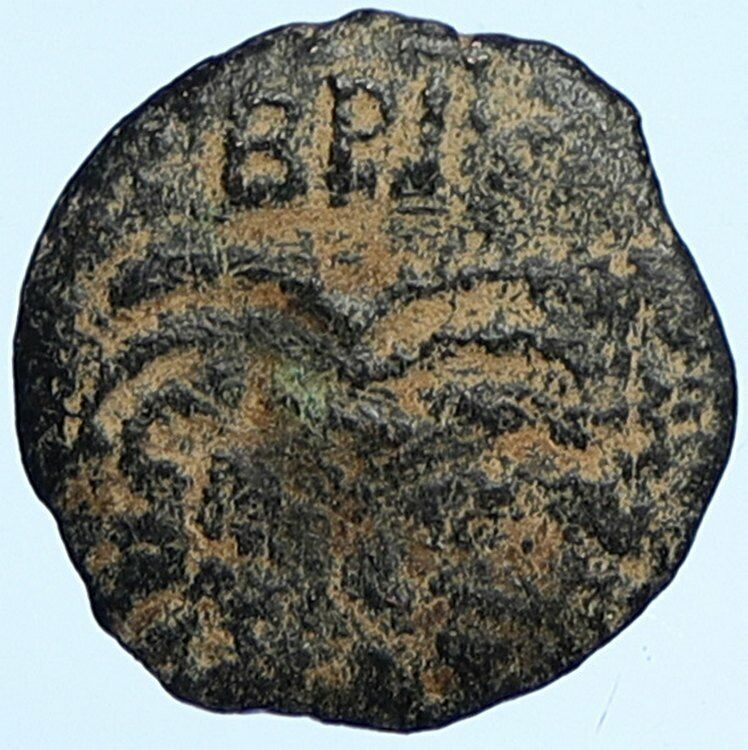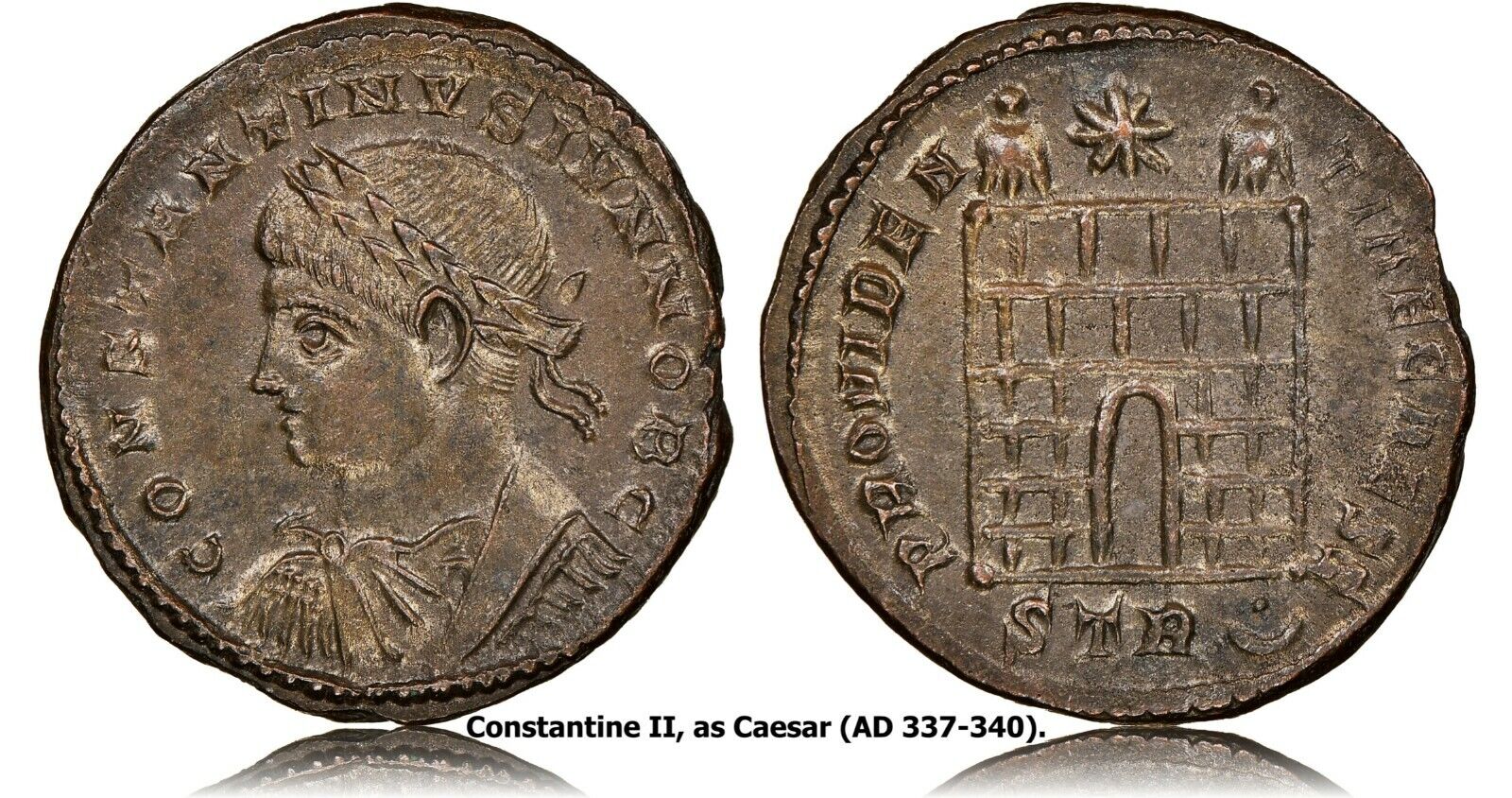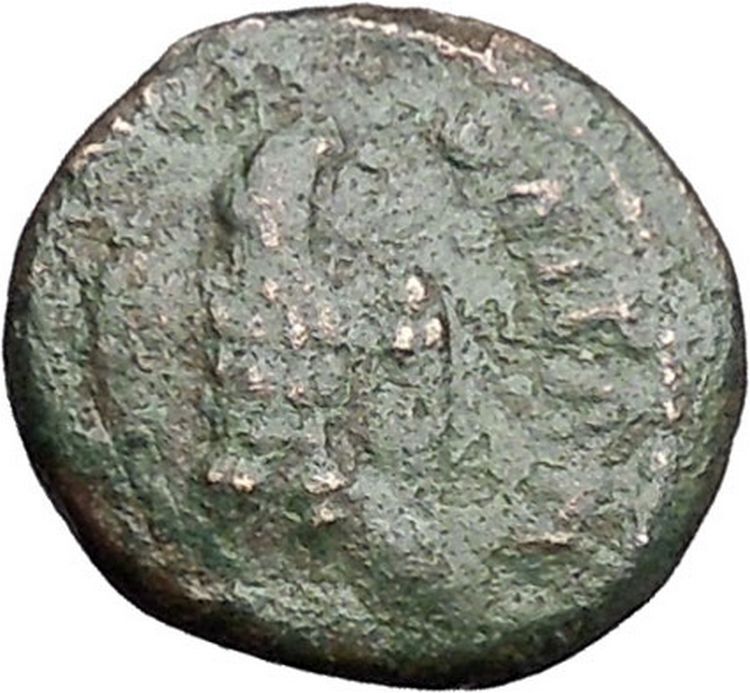-40%
Archaios | Roman Provincial Antioch Philip I Legionary Eagle Vexillum Standards
$ 52.8
- Description
- Size Guide
Description
Archaios NumismaticsDescription:
Roman Provincial Bronze coin of Volusian from Antioch in Pisidia, circa. 251 to 253 AD.
Obverse:
Radiate draped and cuirassed bust of emperor facing Right. IMP M IVL PHILIPPVS A.
Reverse:
Central Vexillum flanked by two shorter military standards (Signae) all topped by Legionary eagles, denotation S-R (Senatus Romanus) around base of Vexillum. ANTIO-CHI CO-LON (the last , LON, upside down in exergue)
Mint:
Antioch, Pisidia
Size:
24 mm
Weight:
7.87 g
Ref:
SNG Cop 76
Inventory Id: 1905.23.11
Condition:
VF. A very nice example of this type with full legends.
As always, Please Use the Picture as your judge as grading is subjective.
Notes:
Antioch in Pisidia
(also known as Antiochia in Pisidia; Antiochia Caesareia; or Antiochia Colonia Caesarea)
was an ancient city at the crossroads of the Mediterranean, Aegean and Central Anatolian regions along the border of Pisidia and Phrygia (hence also known as Antiochia in Phrygia). The city was is on a hill with its highest point of 1236 m. After the death of Alexander the Great,
Seleucus I Nicator, founder of the Seleucid Dynasty, took control of Pisidia
. Captured places were Hellenised and, in order to protect the population, fortified cities were founded at strategically important places, usually on an acropolis.
Seleucus I Nicator had nearly 60 cities founded, and
gave to 16 of them the name Antioch for his father Antiochos
. Colonists were brought from Magnesia on the Maeander to found Pisidian Antioch (the Land of Antiochus).
The geographical
distance from central Roman power of the region made it difficult to control
the area and maintain constant peace.
Rome started to colonize using military legions as a solution to the failure of the locally appointed governors
. During the reign of Augustus, eight colonies were established in Pisidia, but
only Antioch was honoured with the
title of Caesarea and given the right of the Ius Italicum
( under Roman Law and viewed as part of the motherland)
, maybe because of its strategic position. The fertility of the land and the peace brought by Augustus (Pax Romana: Roman Peace) made it easier for the legionary veterans as colonists in the area to have good relations and integration with the natives. The city became an important Roman colony which rose to the position of a capital city with the name of "Colonia Caesarea".
Philip I ( Marcus Julius Philippus )
, also commonly known as
Philip the Arab
, was the Roman Emperor from February 244 to September 249.
He was born in Arabia Petraea, the Roman province of Arabia, in a city situated in modern-day Syria. He went on to become a major figure in the Roman Empire. After the death of Gordian III in February 244, Philip, who had been Praetorian prefect, achieved power.
Philip quickly
negotiated peace with the Persian Sassanid Empire
and during his reign, the city of Rome celebrated its millennium. Among early Christian writers,
Philip had the reputation of being sympathetic to the Christian faith. Probably for this reason, it was even claimed by some that he had converted to Christianity, which would have made him
the first Christian emperor
. He supposedly tried to celebrate Easter with Christians in Antioch, but the bishop Saint Babylas made him stand with the penitents. Philip and his wife received letters from Origen of Alexandria (the early Christian scholar)
In 234,
Philip married Marcia Otacilia Severa
, daughter of a Roman Governor. They had three children, a son named Marcus Julius Philippus Severus (Philippus II), born in 238, a daughter called Julia Severa or
Severina
who is known from numismatic evidence but is never mentioned by the ancient Roman sources and a son named Quintus Philippus Severus, born in 247. In 248 there was much rebellion and strife across the emipire in Pannonia and Moesia, Dacia, and Thrace. Philip was eventually betrayed and killed at the Battle of Verona in September 249 following a rebellion led by his successor - the usurper Gaius Messius Quintus Decius.
The Roman Standard (Signum or Signa Romanum or Signa Militaria)
was a pennant, flag, or banner, suspended or attached to a staff or pole, which identified a Roman legion (infantry) or Equites (cavalry). The Standard of a cavalry unit was emblazoned with the symbol of the serpent (Draconarius) while a legion of infantry was represented by a totemic animal.
The most famous of these is the eagle (or Aquila)
but according to Pliny the Elder there were also legions identified by the boar, the wolf, the horse, and man-headed ox (minotaur). After the devastating Roman defeat at the battle of Arausio against the Cimbri and Teutons the consul Gaius Marius undertook
an extensive military reform in 104 BC in which the four quadrupeds were laid aside as standards, the eagle (Aquila) alone being retained
. It was made of silver, or bronze, with outstretched wings, and was of a relatively small size, since a standard-bearer (known as a signifer) is said in circumstances of danger to have wrenched the eagle from its staff and concealed it in the folds of his girdle. A legionary known as an aquilifer, or eagle-bearer, carried this standard and each Legion carried one eagle.
The Standard was important as a rallying point, symbol of pride and, more practically, as a means of communication in battle.
A trumpet blast would draw the attention of the troops to the Standard which would then direct which action should be taken on the field. The Standard bearer would lower, raise, wave, or make some other motion with the Standard to indicate what the next move was for the troops or to change some tactic or formation. So important was the Standard to the armies of Rome that battles were fought for their return. In the time of the Roman Republic the Standards were imprinted with the letters SPQR which was an abbreviation for Senatus Populusque Romanus (Senate and People of Rome). The Standard, then, represented not only the legion or cohort which carried it but the citizens of Rome, and the policies the army represented.
Other Standards:
Besides the Serpent and Eagle symbols of the Legion, there were also
the Imago
(a Standard displaying the image of the emperor),
the Manus
(an open hand at the top of the banner), and the
Vexillum (a rectangular cut cloth of a certain color, sometimes with a number, attached to a pole)
. Additionally there were Banners which designated military hierarchy (a red banner, for example, would designate a general).
The Vexillum designated the type of unit (legion or cohort) and which legion it was.
The Manus of the open hand symbolized the loyalty of the soldiers and the trust they had in their leaders. The Imago reminded the troops of the emperor they fought for and symbolically stood for the will of Rome among them. A Standard would have more than one banner on it except for the Vexillum which was used to direct the troops' movements.
Includes excerpts taken from Head's Historia Numorum; Wikipedia, The Free Encyclopedia, and the Ancient History Encyclopedia
We Thank You for stopping in and taking time to look at and bid on our listings.
Good Luck Bidding or Buying !
We encourage you to
click the "
See other items
" link
above in the "
Seller Information
" area of the listing as well to check out our other items posted. We have a variety of great classical and other ancient numismatic items available.
We will be regularly continuing to post for sale and auction a
wide variety of Ancient Roman, Greek, and Eastern coins as well as Medieval, Byzantine, and some Modern coins as well.
We do combine shipping if buying or winning multiple items. Just contact us before you pay and let us know and we will gladly send an updated invoice with the combined shipping amount.
You can also follow us to be notified when new listings are posted.
With over 20 years in the numismatics hobby
we continue to revel in the excitement that comes from holding each new small piece of history in our hands.
We enjoy the enduring sense of history both of the prior uses and users as well as the creativity and necessity that surround the time and place at which these coins were minted and used in circulation.
Our aim is to cater not just to the high end collector but also to the hobbyist and the newly initiated and those on a limited budget.
Everyone starts the hobby somewhere and where we can share our knowledge to help inform or jumpstart your collecting pleasure we will aim to do so.
We want you to love every purchase you make with us and
we always stand by the quality and authenticity of all the coins we are selling
.











